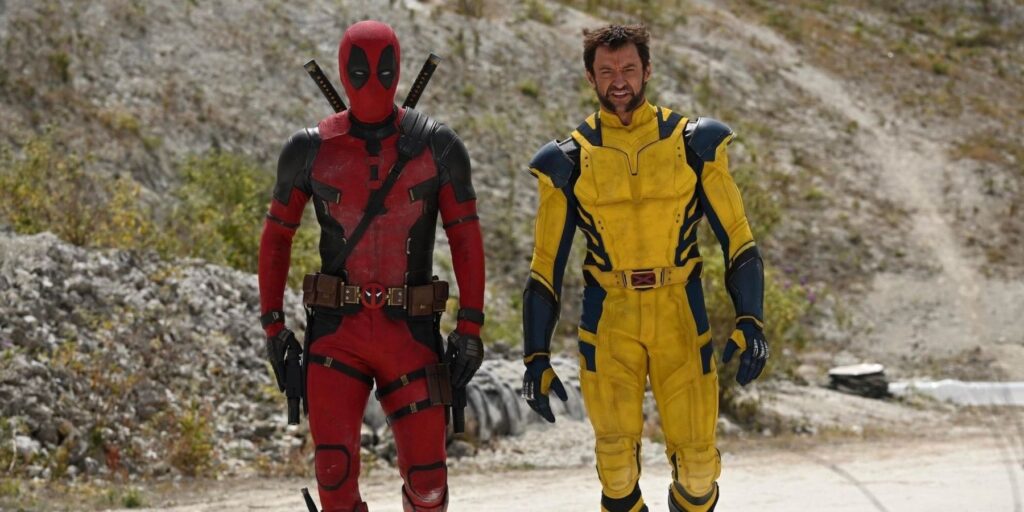
Deadpool 3 put Hugh Jackman’s Wolverine and Ryan Reynolds’ Deadpool into new super suits that harken back to their earlier days of comic book fame. Deadpool’s appearance has always been one of the most faithful designs in modern comic book movies. The changes, most prominently the black circles around his eyes, speak to the film’s commitment to bringing old drawings to life. That wasn’t always the goal of superhero movie costume design.
No comic book movie details are safe from fan outcry. Any change from the source material risks enraging countless devotees who will wage war over their favorite line of dialogue or physical trait. Now that a million of these movies hit the screen every year, fans generally agree that capturing the character’s spirit, whatever that means to them, is the most critical goal. However, small details often make the difference.
Superhero Suits in Serials
Superhero films aren’t quite as old as the heroes, but they come close. Mandrake the Magician, The Shadow, and The Phantom adapted the pulp noir comics that, in many cases, influenced the superhero genre. These serials were formulaic, typically released weekly with cliffhanger endings that enticed viewers to return for the next outing. Captain Marvel (now known as Shazam for legal reasons), Batman, Captain America, and Superman were the first superheroes to reach the screen. Their suits were either spandex, made to resemble athletic wear, or clothing fitted together into a suitable facsimile. Despite the absence of color, these costumes generally emphasized faithful adaptations of the comic. They rarely, if ever, deviated from the core goal of putting the characters on screen. This was a boom period for comics, so leaning on the source material guaranteed support from fans.
The Golden Era of the 70s and 80s
As the serials faded, superhero films reached the first phase that fans look back upon fondly. Christopher Reeves as Superman, Michael Keaton as Batman, and many more examples demonstrate some creativity. Richard Donner’s Superman gave Reeves a “muscle tunic” to capture Clark Kent’s physique and darkened the blue of his suit. Tim Burton’s Batman replaced the usual spandex with carved foam latex pieces over a neoprene bodysuit. Batman enjoyed a new look in each film, but 1989’s Batman provided the basis for every other on-screen entry. These suits keep the spirit of the original comics, with some creative changes to suit the new medium. Batman is the best example, allowing for non-stop innovation for better and worse.
The Edgy Days
Superhero movies hit several snags in the 90s. Judge Dredd, Tank Girl, Steel, Barb Wire, The Phanom, and several other adaptations failed their source material. Batman & Robin stood as a condemnation of the genre, perceived as a toy commercial, and despised more for its camp elements than its quality. Some see Batman & Robin as a brush with death for superhero cinema. Outings like The Crow, Spawn, and Sam Raimi’s Darkman increased audience expectations for adult-oriented features, making any step into “kid stuff” a massive risk. Blade provided the perfect new direction. His outfit was faithful to his most recent comic book appearance, 1998’s Sins of the Father, but it matched The Matrix and allowed for a new all-leather gimmick. That’s how Catwoman and Elektra ended up in leather bikinis next to Daredevil’s shiny red outfit. The worst example was the X-Men, who abandoned their distinct yellow spandex for dull black leather. They even worked in a little gag at the expense of the classic look. It didn’t appear in a film until First Class, but the world only now sees Wolverine in the yellow and blue for Deadpool 3.
Modern Marvel and DC
The MCU and DCEU dominate the superhero game currently. They have opposing views on costume design. Marvel loves the source material but regularly adds details to increase realism or evoke the look of military gear. While earlier examples preferred circus performers and Olympic athletes, Marvel likes heroes to resemble colorful supersoldiers. DC gave Zack Snyder control over the franchise’s early days, leaving most of its cast looking like garrish Greek gods with increasingly absurd gimmicks. Marvel adds endless pointless lines and black details to their costumes. DC drains most of the color from their ensemble and widens the silhouette until most of their cast looks like apes. Both like to use classic looks as treats and teases for their core audience, holding the most faithful references, often to older examples, as Easter eggs. Deadpool remains committed to the original look, pushing back even further with its latest entry.
Deadpool 3 seeks to undo the shame of early on-screen versions of Wade and Logan. By reaching into the past, they extend a hand of goodwill to fans and promise reverence for the source material. Comic book movies grew from slavishly obeying the style guide to adding creative twists with new iterations to abandoning the original look to chase trends. They’ve reached a somewhat happy middle ground, and Deadpool is here to shake it up as always.